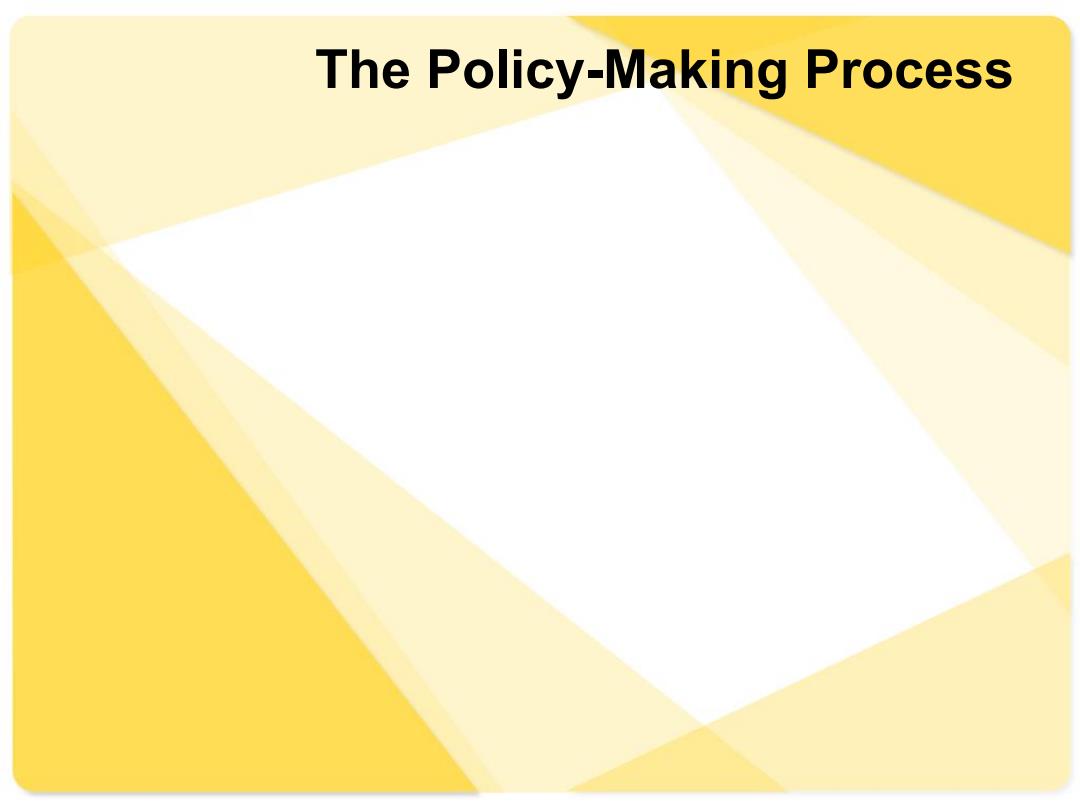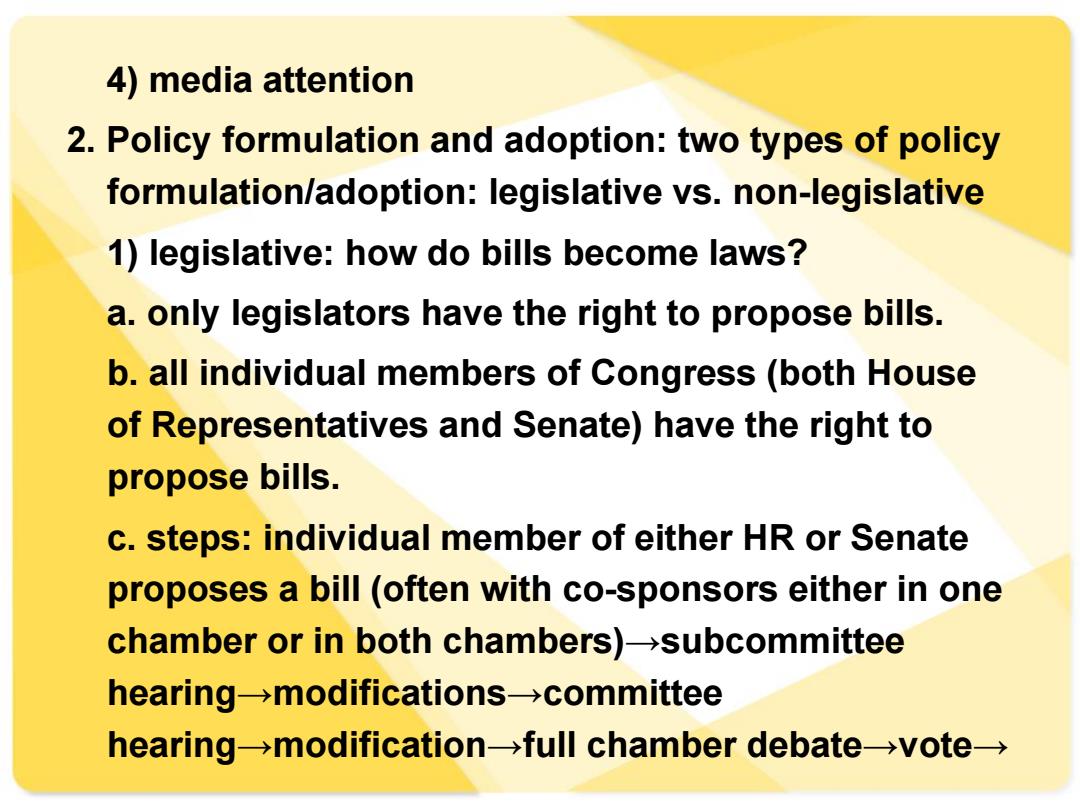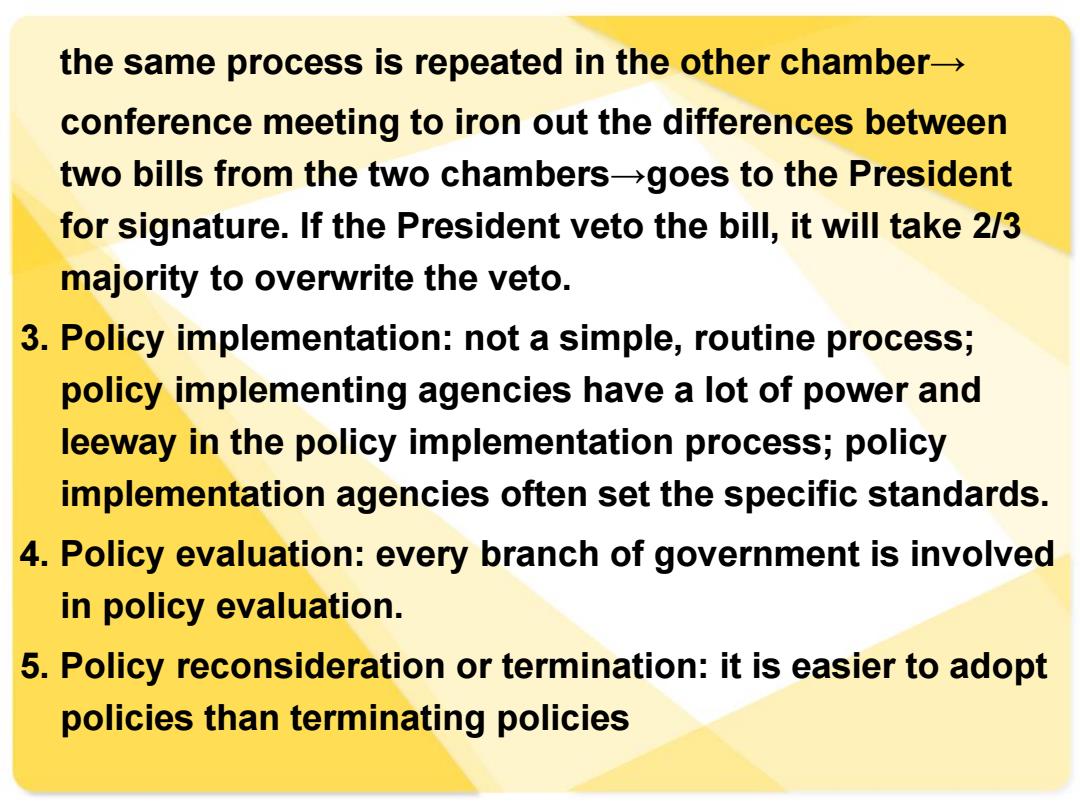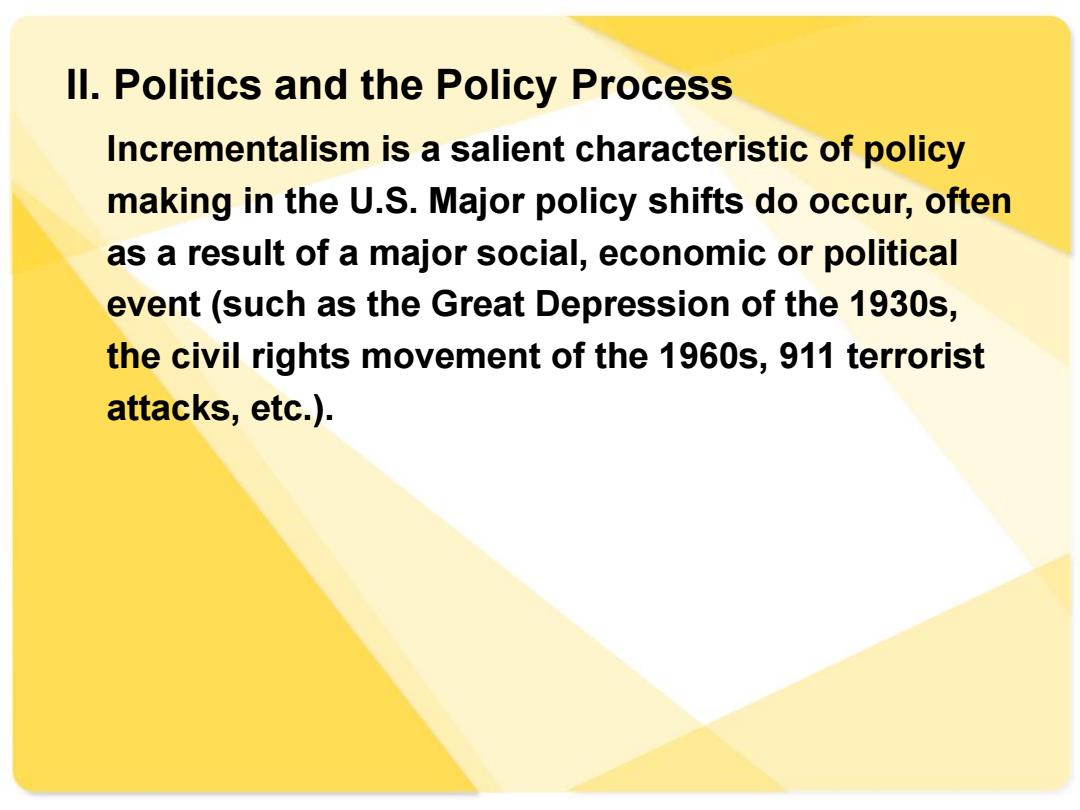
The Policy-Making Process
The Policy-Making Process

I.Stages in the Policy-Making Process 1.Problem recognition (agenda setting) Most problems are solved privately (without government actions)or at the state and local levels. Major causes of problem recognition: 1)big social or political events,such as the Great Depression,911 terrorist attacks,natural disasters, etc.; 2)serious issues affecting large number of people; 3)issues promoted by important individuals and groups,such as the president of the U.S.,important members of Congress,celebrities,influencing interest groups,etc
I. Stages in the Policy-Making Process 1. Problem recognition (agenda setting) Most problems are solved privately (without government actions) or at the state and local levels. Major causes of problem recognition: 1) big social or political events, such as the Great Depression, 911 terrorist attacks, natural disasters, etc.; 2) serious issues affecting large number of people; 3) issues promoted by important individuals and groups, such as the president of the U.S., important members of Congress, celebrities, influencing interest groups, etc

4)media attention 2.Policy formulation and adoption:two types of policy formulation/adoption:legislative vs.non-legislative 1)legislative:how do bills become laws? a.only legislators have the right to propose bills. b.all individual members of Congress (both House of Representatives and Senate)have the right to propose bills. c.steps:individual member of either HR or Senate proposes a bill(often with co-sponsors either in one chamber or in both chambers)-subcommittee hearing→nodifications→committee hearing→modification→full chamber debatevote→
4) media attention 2. Policy formulation and adoption: two types of policy formulation/adoption: legislative vs. non-legislative 1) legislative: how do bills become laws? a. only legislators have the right to propose bills. b. all individual members of Congress (both House of Representatives and Senate) have the right to propose bills. c. steps: individual member of either HR or Senate proposes a bill (often with co-sponsors either in one chamber or in both chambers)→subcommittee hearing→modifications→committee hearing→modification→full chamber debate→vote→

the same process is repeated in the other chamber conference meeting to iron out the differences between two bills from the two chambers-goes to the President for signature.If the President veto the bill,it will take 2/3 majority to overwrite the veto. 3.Policy implementation:not a simple,routine process; policy implementing agencies have a lot of power and leeway in the policy implementation process;policy implementation agencies often set the specific standards. 4.Policy evaluation:every branch of government is involved in policy evaluation. 5.Policy reconsideration or termination:it is easier to adopt policies than terminating policies
the same process is repeated in the other chamber→ conference meeting to iron out the differences between two bills from the two chambers→goes to the President for signature. If the President veto the bill, it will take 2/3 majority to overwrite the veto. 3. Policy implementation: not a simple, routine process; policy implementing agencies have a lot of power and leeway in the policy implementation process; policy implementation agencies often set the specific standards. 4. Policy evaluation: every branch of government is involved in policy evaluation. 5. Policy reconsideration or termination: it is easier to adopt policies than terminating policies

2)non-legislative:bureaucratic regulations; presidential executive orders,controversial,does not have clear constitutional basis,Congress tried to override presidential executive order between 1939-83 when the court determined that Congress does not have such power.Presidential executive orders can be tested by court,but the court rarely challenges the president's authority in issuing presidential executive orders.The president should be careful in issuing presidential executive orders
2) non-legislative: bureaucratic regulations; presidential executive orders, controversial, does not have clear constitutional basis, Congress tried to override presidential executive order between 1939-83 when the court determined that Congress does not have such power. Presidential executive orders can be tested by court, but the court rarely challenges the president's authority in issuing presidential executive orders. The president should be careful in issuing presidential executive orders

Il.Politics and the Policy Process Incrementalism is a salient characteristic of policy making in the U.S.Major policy shifts do occur,often as a result of a major social,economic or political event(such as the Great Depression of the 1930s, the civil rights movement of the 1960s,911 terrorist attacks,etc.)
II. Politics and the Policy Process Incrementalism is a salient characteristic of policy making in the U.S. Major policy shifts do occur, often as a result of a major social, economic or political event (such as the Great Depression of the 1930s, the civil rights movement of the 1960s, 911 terrorist attacks, etc.)